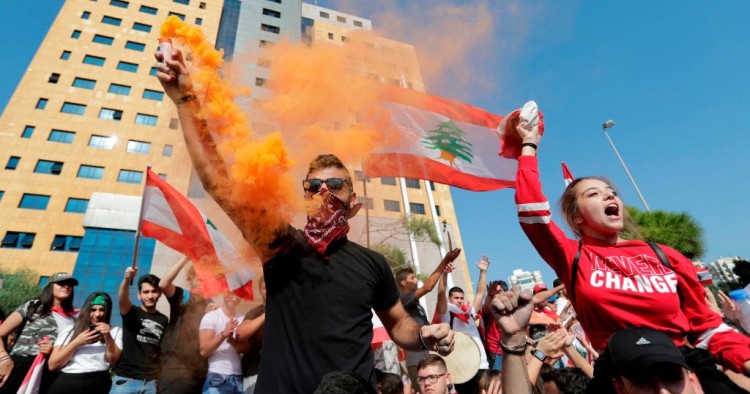Iranians joined Iraqis and Lebanese in their winter of discontent and protest. In all three countries, the drivers are the same: corruption, taxation, mistrust in the ruling class, economic injustice, joblessness, and most importantly an increasing conviction among large swathes of the population that ruling elites do not have credible solutions that can change the failing status quo. While the protests in Lebanon and Iraq do not yet represent an existential threat to the Iran-funded proxy network in the region, they raise serious questions about its long-term sustainability.
In Lebanon, the protests have entered their second month with contending parties stuck in a stalemate that is not hurting enough to incentivize concessions from any party. Ruling elites are at a loss what to do. Some want to use force and anti-defamation laws to kidnap, jail and/or beat enough of the protesters to push them out of the streets. Others are in denial, arguing foreign agendas and money are financing the protests. Others still are trying to ride the wave of protests, sensing an opportunity to position themselves to play a role in a future political order.
Hezbollah is paying the price for never having prioritized governance over militancy and most importantly for not appreciating enough why its para-military status cannot be sustained without a national consensus over the mission(s) which its weapons are supposed to serve. The national consensus started fraying in 2000 following the Israeli exit from south Lebanon. Israeli occupation of Sheba’a Farms and Kfar Chouba Hills became a convenient reason for sustaining the armed status quo despite the fact that the ownership of these territories remains disputed. The 2006 Israel-Hezbollah war breathed new life into this consensus, reminding all Lebanese of the dangers Israel represents to security and stability in their country. The 2008 Hezbollah-led military incursion into Beirut to protect its communications infrastructure was seen by large swathes of Lebanese as Hezbollah deploying its military muscle not to protect them against Israel, but rather to settle an internal political dispute. The Syria war dealt this consensus a coup de grace when Hezbollah engaged militarily in a civil war in a neighboring country for the principal objective of ensuring the political survival of the Assad regime.
Any new cabinet that will not include the traditional class of political leaders with whom Hezbollah struck its Faustian bargain in 2005 — when it joined the executive branch for the first time since its founding in 1982 — will be seen as undermining a status quo which has been favorable for the group. Hezbollah’s leaders know for now that in the absence of compelling and credible arguments for the use of force against civilian protesters, even in the form of a limited short-term military incursion along the lines of May 2008, any deployment of force will be seen as helping to perpetuate a corrupt system that time and again the party leadership has professed to want to upend. How Hezbollah’s calculus about the use of force to change conflict dynamics on the ground evolves will determine in a large part whether the non-violent nature of the protest movement to date can be maintained.
Randa Slim is a Senior Fellow and the Director of MEI’s Conflict Resolution and Track II Dialogues Program.
Photo by ANWAR AMRO/AFP via Getty Images
The Middle East Institute (MEI) is an independent, non-partisan, non-for-profit, educational organization. It does not engage in advocacy and its scholars’ opinions are their own. MEI welcomes financial donations, but retains sole editorial control over its work and its publications reflect only the authors’ views. For a listing of MEI donors, please click here.













